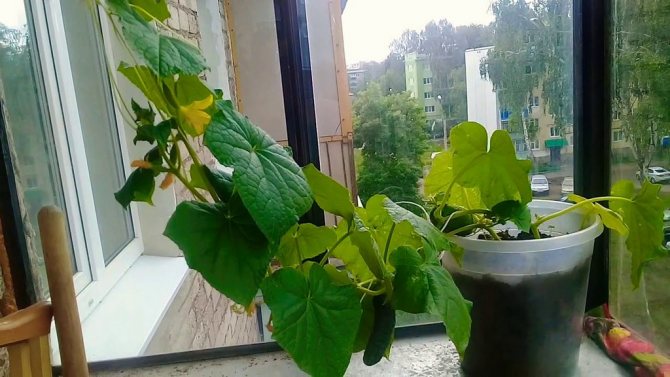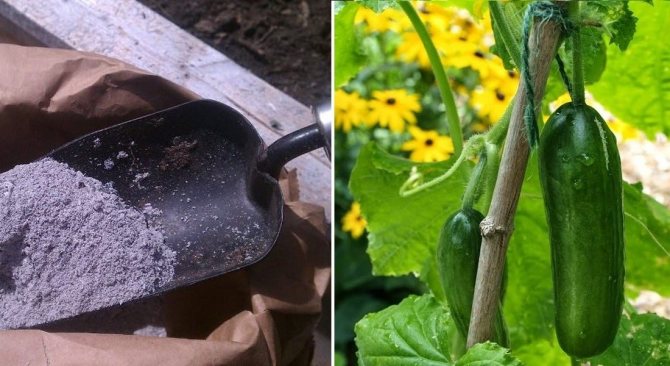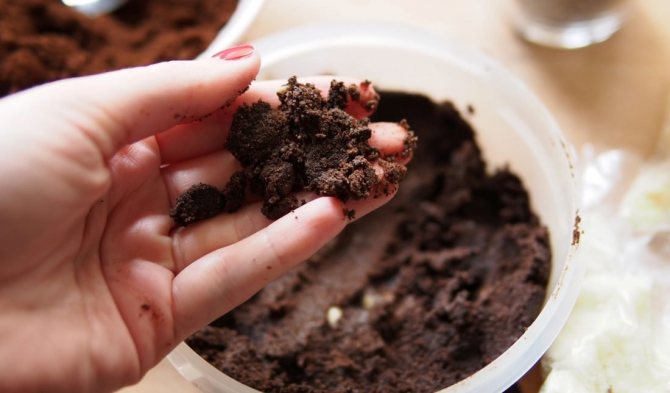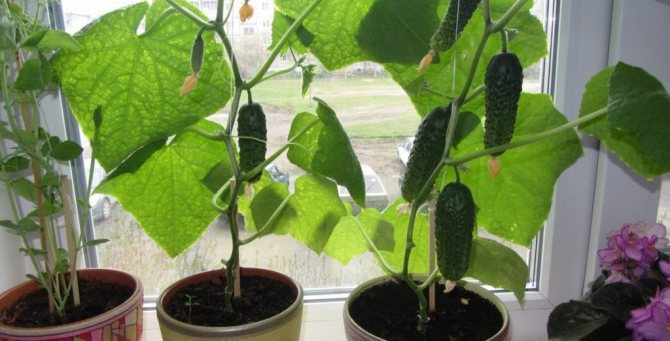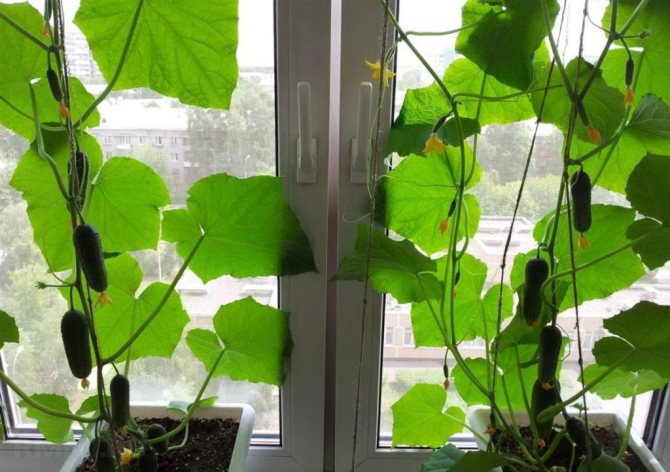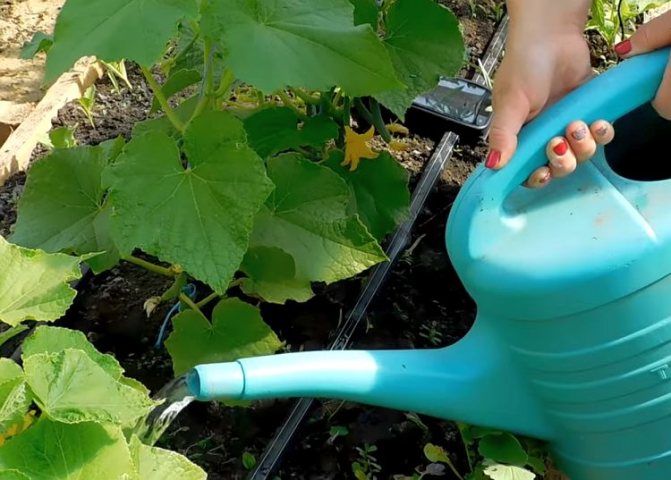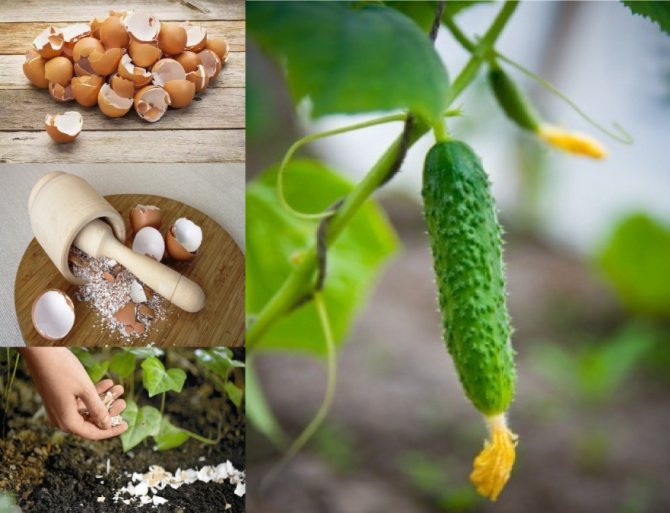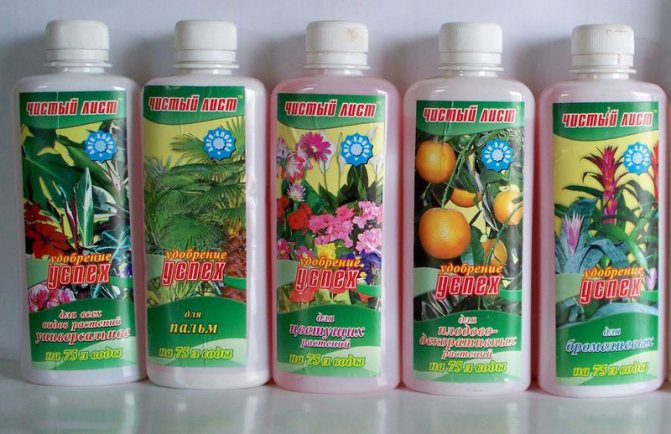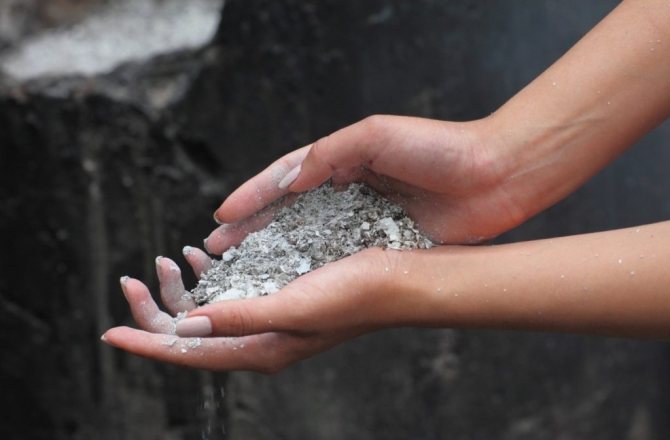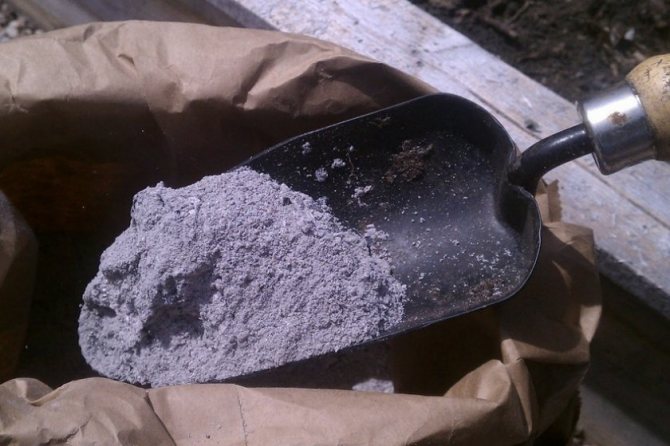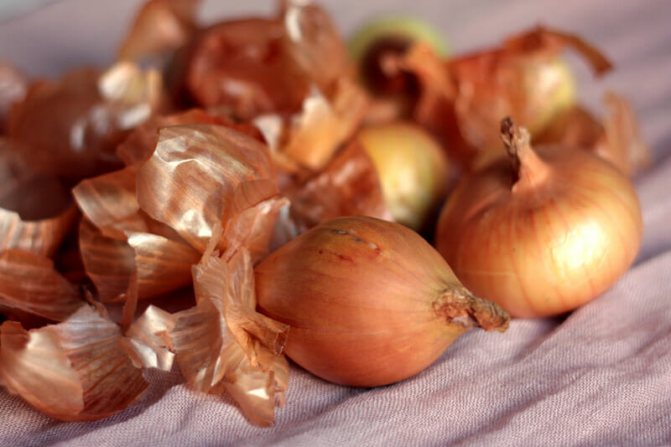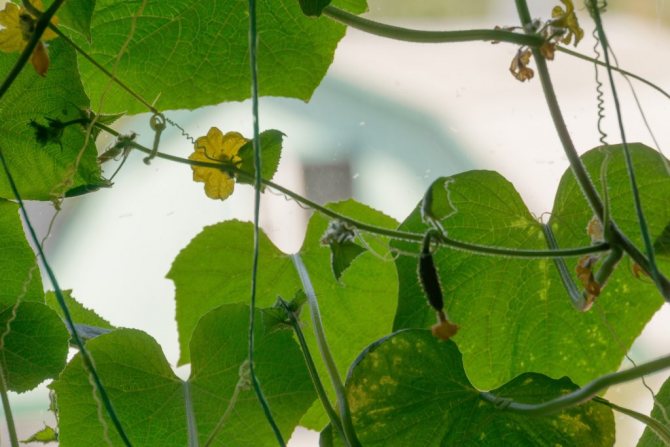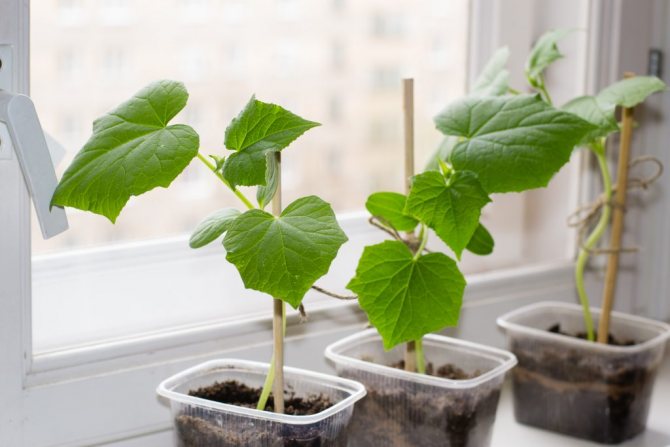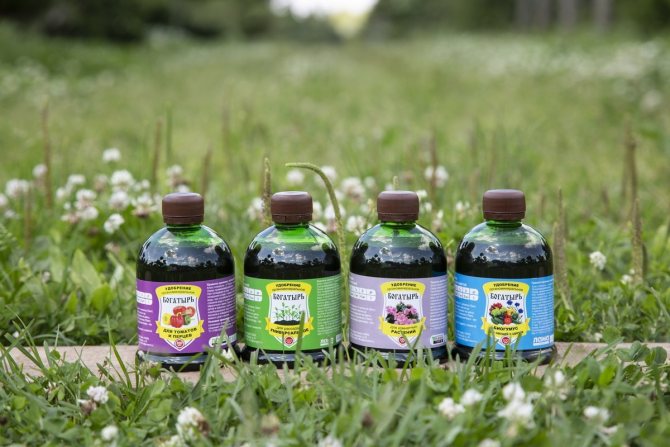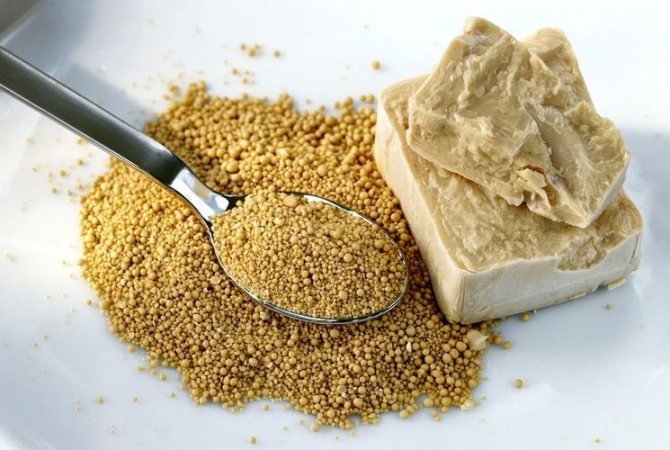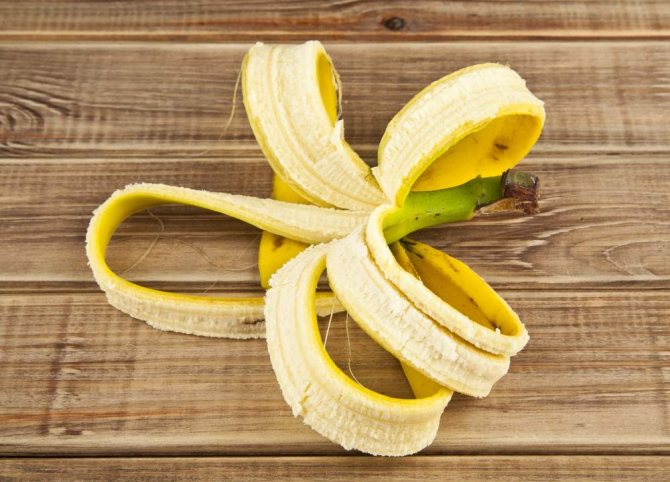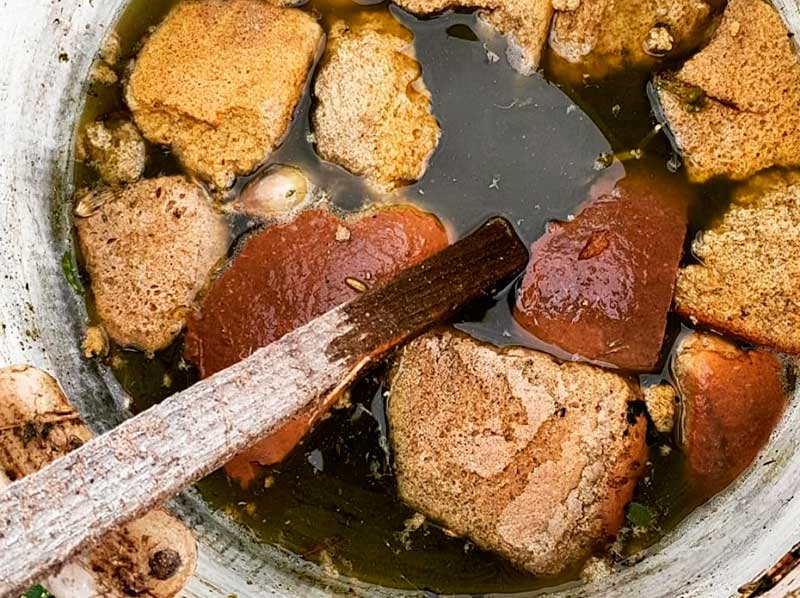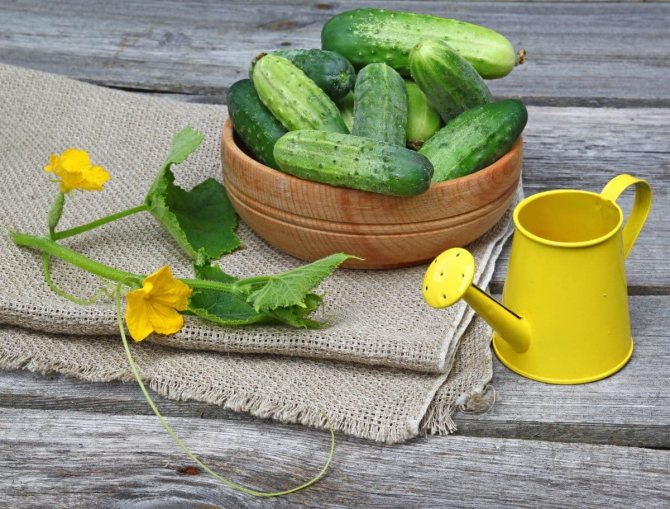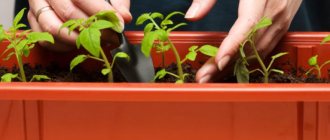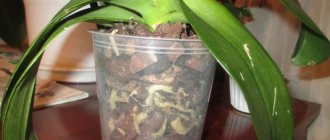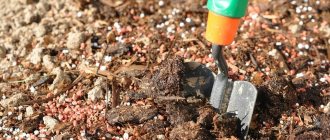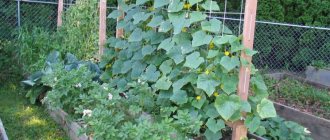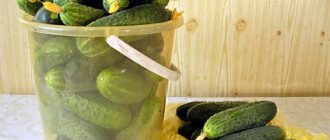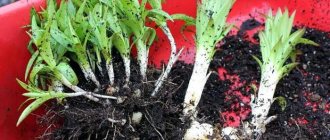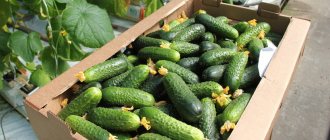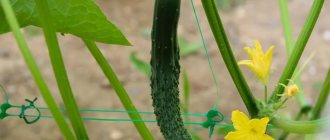Cucumbers are a very popular crop, which can be grown regardless of the season and not only in greenhouses. We are all accustomed to the fact that cucumbers can be grown either in the open field or in greenhouses. The wonders of breeding have made possible all varietal varieties of all kinds of vegetables and their qualities. But not everyone knows that crispy juicy cucumbers can be grown even in your apartment or a house on a windowsill at home.
To collect fruits right in your home, you need to provide such indoor plants with additional care and attention. First of all, such a vegetable indoor variety needs to be fed. Indeed, unlike plants that grow in open ground and take all the necessary nutrients from it, our indoor cucumbers simply have nowhere to take such substances, and our main task is to help them in this.
When to feed
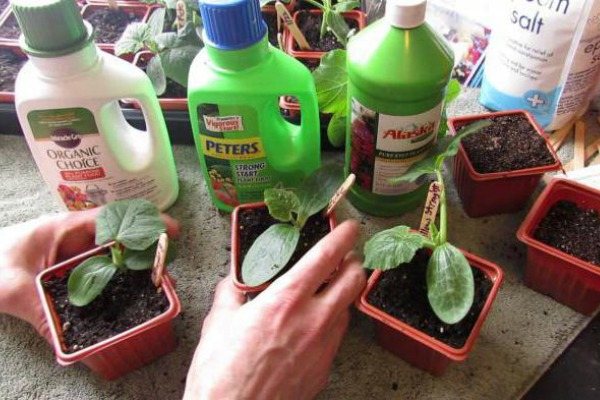
The seedlings are fed 3 times until they are transplanted to the beds. In extreme cases, if the seedlings do not grow well, are weak, they are fertilized every 2 weeks. This applies mainly to greenhouse plants.
- As soon as a real leaf appears on the sprouts, the first feeding can begin. Only aqueous solutions are used during this period. Mineral or organic fertilizer should get to the roots of the sprouts during morning watering.
- A couple of weeks later, after the second leaf has grown, they re-fertilize, and 2 days before transplanting, the seedlings are fertilized for the third time.
Earlier feeding, when the plant has only cotyledon leaves, is completely inappropriate. The plant is still so undeveloped and weak that any food offered to it is simply not able to assimilate.
Studies and experiments have shown that even on completely sterile soil, cucumbers, before the appearance of the first leaf, develop quite normally, since they live thanks to the energy in the seed.
Among vegetable growers, there are supporters of later feeding of seedlings. They argue that the most favorable moment for the adoption of fertilizers from seedlings comes at the time of the formation of 3 leaves. By this time, the roots have developed sufficiently, and are fully capable of fully accepting all the necessary minerals offered.
However, if the plant develops poorly, has a pale and stunted appearance, feeding it can be offered at an earlier date.
On a note
To grow cucumbers on a windowsill, follow these tips:
- Feed the first time when sowing seeds, the second when sprouts appear, and the third when forming the ovary.
- Use more organic fertilizers and foliar dressing to ensure a natural composition of the fruit crop.
- Dilute liquid concentrates according to the instructions, dry in accordance with the prescribed rate per liter of water.
Dear readers, as you can see, there is nothing difficult in preparing dressings for cucumbers. Follow the correct algorithm of actions and you will succeed!
Top dressing rules
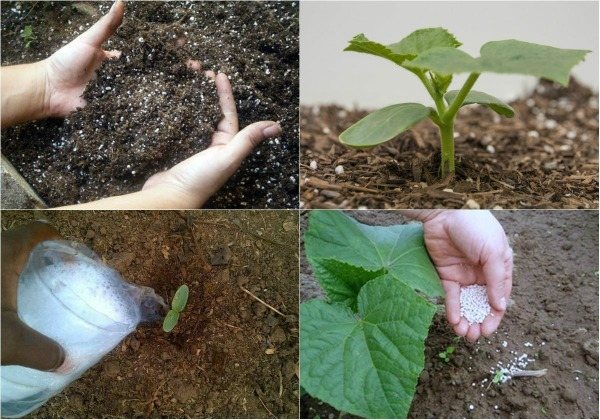

Nutrient solutions should be applied only to the root of the plants, preferably without even getting on the stems. As a rule, water the soil between the shoots.
Foliar dressing is prepared with a completely different concentration, therefore, the low content of trace elements cannot damage the leaves.
Once root feeding has been done, the seedlings should be watered with clean warm water. When fertilizers get on the plant, they are also washed by spraying.
Each root dressing must be combined with foliar dressing. With such a duet, the plant will significantly improve photosynthesis and metabolic processes.
How to feed cucumbers
From the moment of planting to harvesting the cucumbers, it is necessary to fertilize several times. The mixture can be applied at the root, sprayed onto the leaves. The latter option is often used by vegetable growers after the first shoots appear.
It is necessary to prepare the fertilizer solution carefully, following all the recommendations of the recipe or instructions. The finished product should not be concentrated, so it is diluted before use. Otherwise, you can harm the root system of the plant. If top dressing is applied at the root, then at the end of the procedure, it is necessary to water each cucumber bush with water at room temperature.
Growing healthy cucumbers is not an easy task, since it is important not only to provide proper care for the vegetable, but also to fertilize correctly. In order for everything to work out correctly, you need to follow the advice of experienced gardeners and adhere to the recipe for the preparation of top dressing.
How to feed cucumber seedlings so that they are plump
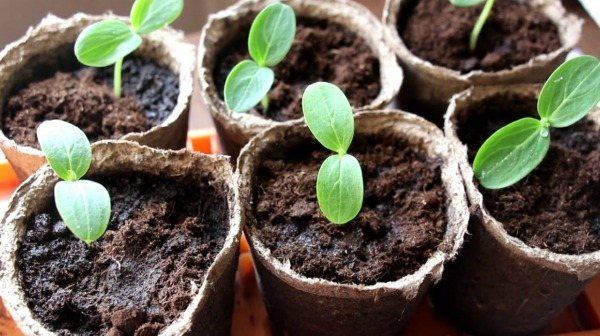

If the cucumber seedlings are lacking in any element, this will definitely affect the subsequent harvest. Lack of potassium will disfigure the greens, nitrogen - will make the fruit conical, calcium - will cause the ovaries to wear out.
Foliar and root dressings are made for cucumber seedlings, offering mineral and natural substances.
Under the root, fertilizers begin to be given when the plants have permanent leaves - this is the first sign that the normal development of the roots. The procedure is usually carried out in the evening, preferably after good watering.
Foliar dressing is carried out when it is difficult for the roots to assimilate minerals from the soil. This happens in cool weather, when it is too damp and cloudy. It is advisable to set the sprinkler of the spray gun to the smallest dispersion in order to more evenly distribute the fertilizer over the foliage.
Complex fertilizers
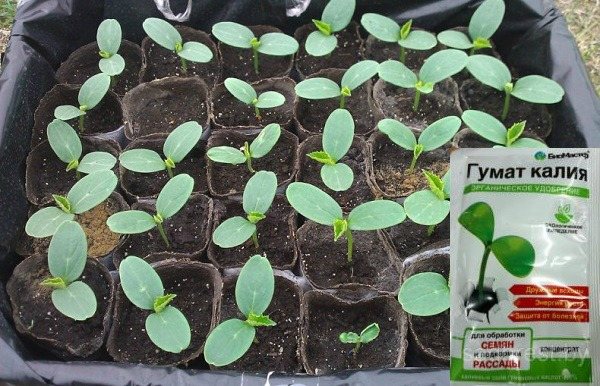

For cucumber seedlings, ready-made complexes are offered: sodium and potassium humate, effecton. Complex fertilizers are very economical: only 1 spoon of fertilizer is diluted in a bucket of water. The ready-made solution can be poured over 5 m² of the plantation.
During the 2nd and 3rd feeding of seedlings, the dose of minerals should be doubled. In addition, a small amount of trace elements is introduced with foliar feeding. At this moment, cucumbers need complex fertilizers saturated with mineral mixtures: Nitrofoska, Kemira-Lux.
The gardeners carry out the third feeding using their own composition. His recipe was compiled by the method of many years of observation and trial:
- Water - 10 liters;
- Potassium salt - 10 g;
- Superphosphate - 40 g;
- Urea - 15 g.
There is one important nuance here: it is very important to use potassium sulfate, but not chloride. This is very important to remember, as chlorine will cause irreparable harm to the seedlings. A bucket of this composition is enough to feed cucumbers on an area of 2 m².
Nutrient substrates
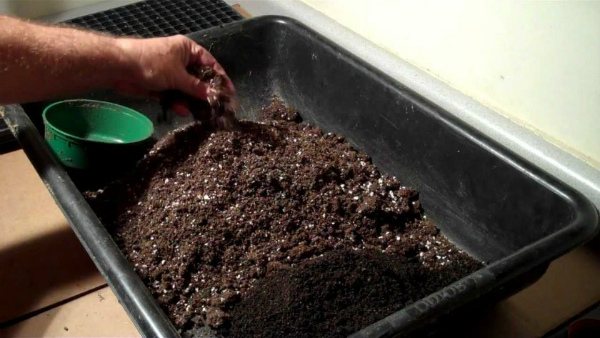

The most convenient way to grow seedlings is to buy a special nutrient medium. Such a wonderful mixture will greatly facilitate the process of caring for the sprouts if you follow the included recommendations.
Any material that can replace soil is suitable for the substrate: mineral wool, sand, sawdust, coconut fiber. They are pretreated and soaked in nutrients.
You can choose a substrate as you wish, the main thing is that it must have the following properties:
- Excellent hygroscopicity;
- The optimal composition of the required elements;
- Acidity limits - 6.4 - 7.0;
- Air permeability, looseness.
You can also buy a soil mixture in stores designed specifically for cucumbers. Inveterate growers try not to use substrates prepared with the addition of peat. The fact is that peat, if there is a problem with water, stops absorbing it, which causes the seedlings to dry out.
Growers prefer to make their own nutrient substrates using their proven methods. They keep their secrets secret, and rarely reveal them to anyone, competing in achieving results.
Organic fertilizing
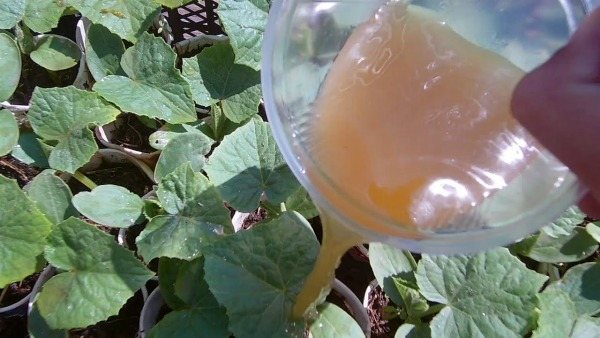

When using organic matter for cucumber seedlings, you should not stop choosing manure. There is a high probability of disrupting the dosage, and the excessive heat generated by the manure can easily damage the roots of the plant.
It is better to use fermented bird droppings. Potassium sulfate and saltpeter are added as organics.
When feeding seedlings for the first time, it is better to offer organic matter in tandem with minerals: rotted humus is combined with superphosphate.
It so happens that there was no organic matter on the farm. In this case, you can use the following recipe:
- A bucket of water;
- Potassium sulfate - 8 g;
- Superphosphate - 14 g;
- Ammonium nitrate - 7 g.
If possible, a little mullein should be added to this solution, or at least fermented bird droppings.
Folk remedies
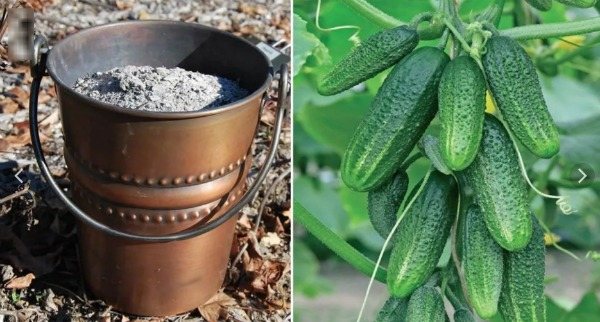

In recent years, more and more gardeners give preference to feeding seedlings using folk methods. This is, first of all, good for health: environmentally friendly feeding prevents the accumulation of chemicals in the fruits, making them safe.
Ash is considered the most favorite and versatile fertilizer. It contains large amounts of phosphorus and potassium. Ash promotes the development and growth of the root system of the culture, saturates the aerial part of the plant with nutrients.
Ashes begin to be used from the moment the seedlings dive, gradually pouring it directly into the holes. It is also scattered right on the ground between the plants, and then watered. You can also infuse ash and water the cucumber seedlings with a solution, spray.
It is recommended to use ash procedures 2 times a month. In addition to ash, other fertilizing can be used for seedlings:
- Starting with the 2nd feeding, boric acid can be offered to the plants. To do this, hot water is poured into a liter mug, 100 g of sugar and a small spoonful of boric acid are put.
- Ordinary yeast will serve as a good feeding for cucumbers. They are not often fertilized with plants, however, the result is always excellent. A pack of 100 g is diluted in a bucket of water and infused for a day. The resulting composition is watered cucumber seedlings under the roots.
- Weed infusions give a good feeding. Nettle, dandelion and other herbs are brewed. According to another recipe, it is proposed to insist on the sun for a week, flooding with water. When feeding, the resulting solution is additionally diluted.
The soil
Approximately 5 kilograms of such a mixture should be obtained. To it should be added 15 grams of nitrophoska, 100 grams of wood ash and 7 and a half grams of urea. Then all this needs to be mixed well. Then cucumbers are planted there, and from the very beginning they will grow strong and healthy.
The soil mixture must be scattered into containers. One plant should have about 5 liters of soil. Plastic pots or boxes are used as containers. Vegetables should have room, so don't plant them close to each other.
The optimal distance between the bushes is 30 cm. In no case should one plant oppress another, otherwise everything will end badly. Containers with seeds should be placed where there is sufficient lighting, and the temperature is 22 degrees (lower is unacceptable).It is in such conditions and with good soil that it will be possible to get an excellent harvest at home. It is not so difficult to create such conditions at home, lighting can be added with the help of lamps, and the temperature can be adjusted with heaters.
What to do if the cucumber seedlings turn yellow
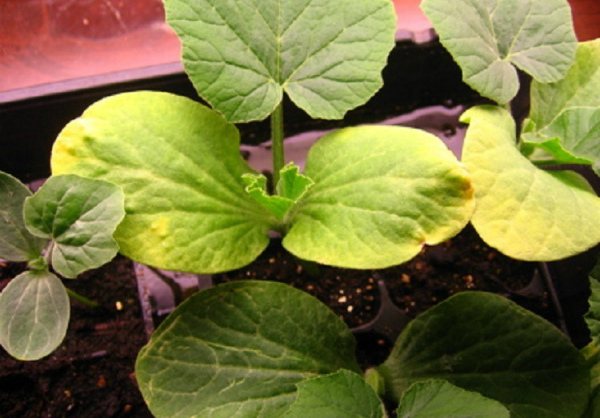

Often, summer residents are faced with such a problem when the cucumber seedlings, even, it would seem, with proper care, begin to turn yellow. This is due to several factors:
- If the seedlings are planted in small cups, then the roots do not have enough space, they are deprived of space and good nutrition. You should immediately transplant and feed the plants;
- Sometimes there is not enough nitrogen for the development of seedlings. Azogran or Vermistim will help to replenish stocks. Also, yellowing can be observed with a lack of manganese;
- When the seedlings outgrow, but they are still not planted in the plots, they begin to turn yellow;
- In sprouted cucumber sprouts, the cotyledon leaves turn yellow in low light;
Some gardeners like to share their secrets. When feeding cucumber seedlings, they use some tricks that are not available to beginners:
- A spoonful of one of the fertilizers (Ideal, Breadwinner, Fertility) is dissolved in a bucket of clean warm water. Each sprout must be allocated a portion - half a glass;
- In a bucket of water, dissolve the following preparations in a teaspoon: Agricola-vegeta and nitrophoska;
- Before planting seedlings in the beds, 0.5 liters of Barrier solution should be poured into each well.
What fertilizers should not be used
For cucumber seedlings, fresh manure cannot be used as top dressing: this can lead to root burns. On neutral soils or with a high alkali content in the soil, do not add urea (urea).
Growing cucumbers is not easy. To get a rich harvest of ripe and tasty fruits, you need to provide plants with proper care at all stages of their growth and development. Not knowing how to feed the seedlings of cucumbers, it is better to ask for advice, find out what effective methods of processing crops exist from specialists.
Gardener Tips
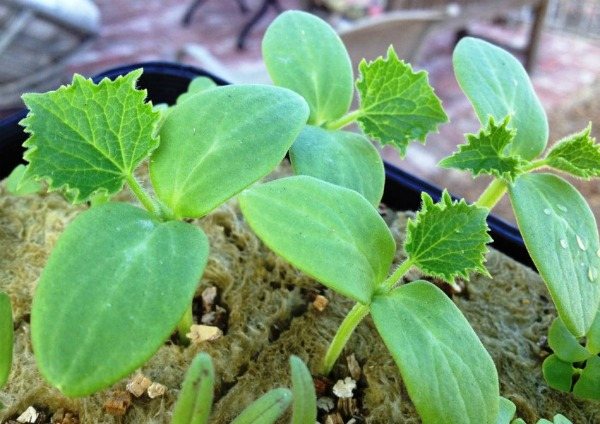

To keep the seedlings strong and the fruits plump and crispy, you can follow the advice and recommendations of more experienced growers.
- Greenhouse seedlings can be fed at most 5 times if they are weak or sluggish. Healthy plants need 3 dressings. Fertilizers are selected taking into account the type of soil. More nitrogen should be added on sandstones, and potash should be added on floodplains.
- An unnatural foliage color appears in seedlings with an excess of minerals.
FAQ
When using dressings for cucumbers, you may have questions, I give answers to some of them:
Will cucumbers grow without feeding in an apartment
Without feeding, the cucumber bushes will wither, the shoots will dry out, the flowers and ovaries will fall off. Therefore, do not expect fruit. I have a crop from one bush on the windowsill of 2-3 kg.
Will frequent feeding affect the taste of the cucumber?
Do not feed often, an excess of mineral fertilizers is as bad as a lack. There should be a measure in everything.
Is feeding cucumbers in an apartment harmful for living people?
Fertilizers are good for cucumbers and not harmful for those living in the apartment.
Foliar spraying
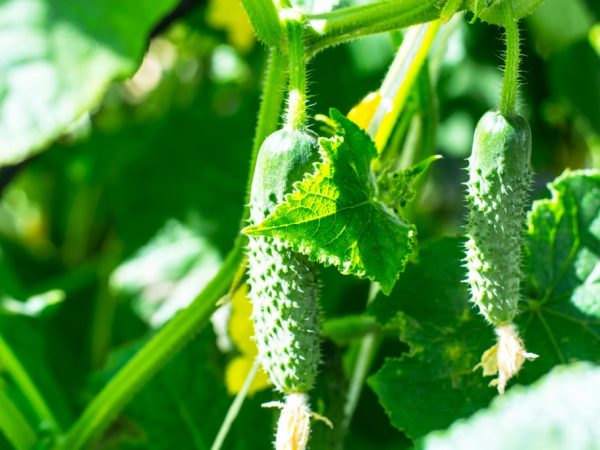

Healthy plants do not need fertilization
Foliar plowing is carried out using mineral complexes enriching with phosphorus, potassium and nitrogen. Working solutions are made with a very low concentration so as not to burn young foliage.
- Ash solution: 100 g of wood ash per 1 liter of water.
- Azofoska: 10 g per 3 liters of water.
- Boric solution: 1 g of boric acid per 1 liter of water;
- Potassium permanganate: 10-15 crystals are soaked in 3 liters of water;
- Yeast solution: 0.5 kg of live yeast per 2.5 l of water, kept for a day, diluted in a ratio of 1:10.
Seed selection
The choice of seeds for seedlings depends on where you will plant the seedlings - in a greenhouse or in open ground. Hybrids are more suitable for greenhouse conditions (they are usually self-pollinated and the presence of insects for the formation of the ovary and flowering is not necessary for them). Hybrid seeds are usually labeled "F1" on store-bought packages.
If the seedlings will be grown in the open field, it is better to take varietal seeds. They are less fastidious in cultivation, but their yield is lower than that of hybrid ones.
The basics of correct seeding
If you plan to grow cucumbers on the windowsill, then you can start sowing seedlings in mid-December. It is important to understand that if the plant is planted within the specified time frame, then in the future it needs to be provided with proper care. Subject to all the simple, but very important conditions, it will be possible to enjoy a fresh cucumber already in April.
Sowing
Before starting sowing work, the seeds must be disinfected. A slightly pink solution of potassium permanganate is perfect for this. The prepared seeds are dipped into a solution, kept there for 20 minutes, then taken out of the liquid and laid out on damp gauze. Leave the seeds for a couple of days in a warm place, and as soon as they begin to swell, you can start sowing.
The seeds are sown in plastic cups or peat pots, which are pre-filled with soil mixture. An ideal soil for cucumbers will be a composition containing peat, humus, sod soil, crushed sawdust in equal proportions.
As a nutritional supplement, the following composition can be added to the soil mixture: 1 tbsp. wood ash, 1 tbsp. spoon of urea, 1 tbsp. l. Nitrofoski.
It is also recommended to disinfect pots (cups) before sowing. To do this, they are dipped in a potassium permanganate solution for a couple of minutes or kept over steam. After - soil + top dressing is placed in the cups and cucumber seeds are sown. One cup is placed 1 cucumber seed to a depth of 1.5 cm. Then the soil is sprinkled with warm water. All containers with seeds must be placed on the windowsill and ensure that the air temperature is constantly within the range from +23 to +26 degrees.
Emergence of seedlings
As soon as young shoots appear above the soil, the plant will need additional lighting. You can leave the seedlings on the windowsill, but reliably protect them from drafts. And you can install special lamps above the plants, which will constantly supply bright light to young seedlings.
Important! Lamps are required to be placed only in a horizontal position. They should not be allowed to come into contact with plants, ideally if there is a distance of 15 cm between the cucumbers and the lamp.
It is recommended to illuminate the plants continuously for 12 hours. Therefore, the lamps are turned on from 8 in the morning and turned off at 20 in the evening. At night, the plants must "rest".
Watering
It is known that cucumbers are sensitive to watering. For cucumbers growing on the windowsill, it is enough to water twice a week. Watering is carried out with warm (preferably settled during the day) water.
Planting and leaving
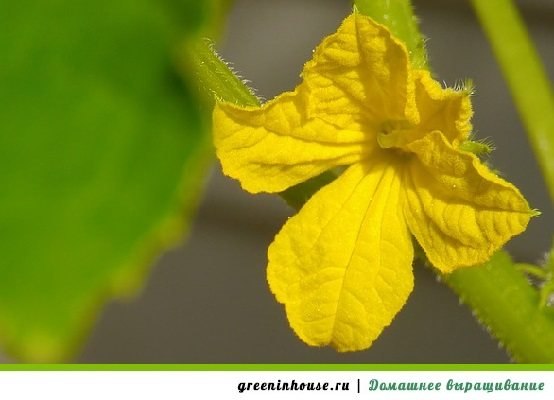

Prepare the seeds before planting. To do this, we soak them for half an hour in potassium permanganate, and then put them in a damp cloth and wait for pecking.
After that, we bury the seed about 2 cm in the prepared soil. After planting, cover the container with polyethylene and set it in a warm place.
When the first shoots appear, we remove the greenhouse and put the plant in the light. Be sure to check that there is no draft.
At this stage, for a short time, it is necessary to reduce the temperature to 19-20 degrees to harden the seedlings.
After about a month, the seedlings should grow enough to be transplanted.The transplant is done very carefully so as not to damage the sensitive root system.
Next, we follow the standard care scheme, not forgetting to fertilize and water the cucumbers.
Dates of the
Fertilizers are applied three times - usually this amount is enough. But for poorly growing plants, especially from low-quality seeds, the number of treatments can be increased.
- The first feeding of cucumber seedlings falls on the time when 3-4 leaves appear - it ensures the full development of the roots. It is carried out simultaneously with irrigation.
- The second is planned when the 5th and 6th leaves are formed - it is intermediate, and it is made based on the state of the seedlings.
- The third time - 2 weeks after the first one.
At the same time, the culture planted in a permanent place is fed not immediately, but only after 2 weeks, because plants that have received stress may not be able to cope with the additional load, and the root system requires adaptation to new growth conditions.

